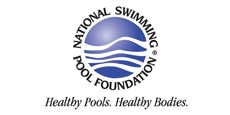Cryptosporidium and SDS

In general, the required levels of chlorine preclude the use of chlorine disinfection as a reliable method to control Cryptosporidium in pool and drinking water.
In August and September of 2005, thousands of people fell ill with cryptosporidiosis, a gastrointestinal
illness that causes diarrhea and vomiting. Over 2500 victims filed law suit.
After nine years of litigation and legal wrangling, New York State recently reached a settlement and those
2,500 plaintiffs will share $5 million paid by the state as reparations for infections suffered after being
exposed to the waterborne disease at the park.
The secondary disinfection system is meant to supplement chlorine, to which crypto and giardia have
shown resistance over the last decade.
Cryptosporidium is highly resistant to chlorine disinfection, but with high enough
concentrations and contact time, Cryptosporidium inactivation will occur with chlorine dioxide
and ozone treatment. In general, the required levels of chlorine preclude the use of chlorine
disinfection as a reliable method to control Cryptosporidium in pool and drinking water.
Ultraviolet light treatment at relatively low doses will inactivate Cryptosporidium.
The new rules for N.Y. splash play facilities that recycle water require disinfection using chlorine, filtration
and ultraviolet (UV) disinfection systems. The code includes specific guidance on filtration to ensure water
clarity necessary for effective UV treatment.
In an article titled the CEO of the National Swimming Pool Foundation (NSPF), support the use of SDSs
and call for a number of additional measures that will help prevent future outbreaks: “Crypto creates a
unique hazard at recreational water facilities since chlorine inactivation is slow and filtration is not
particularly effective. As a result, the number of outbreaks is consistently increasing with crypto being the
leading cause in recent years. Facility management, operators, designers and owners must thoroughly
consider using UV systems as a tool to supplement traditional disinfection and filtration to prevent the
spread of illness from crypto.
“A third leg of protection, like UV, is likely to become the norm in the decade to come, according to CDC.
Last but not least, education for staff, management and the swimming public is vital so everyone
understands the consequences of emerging germs and emerging defenses to limit their spread.”








